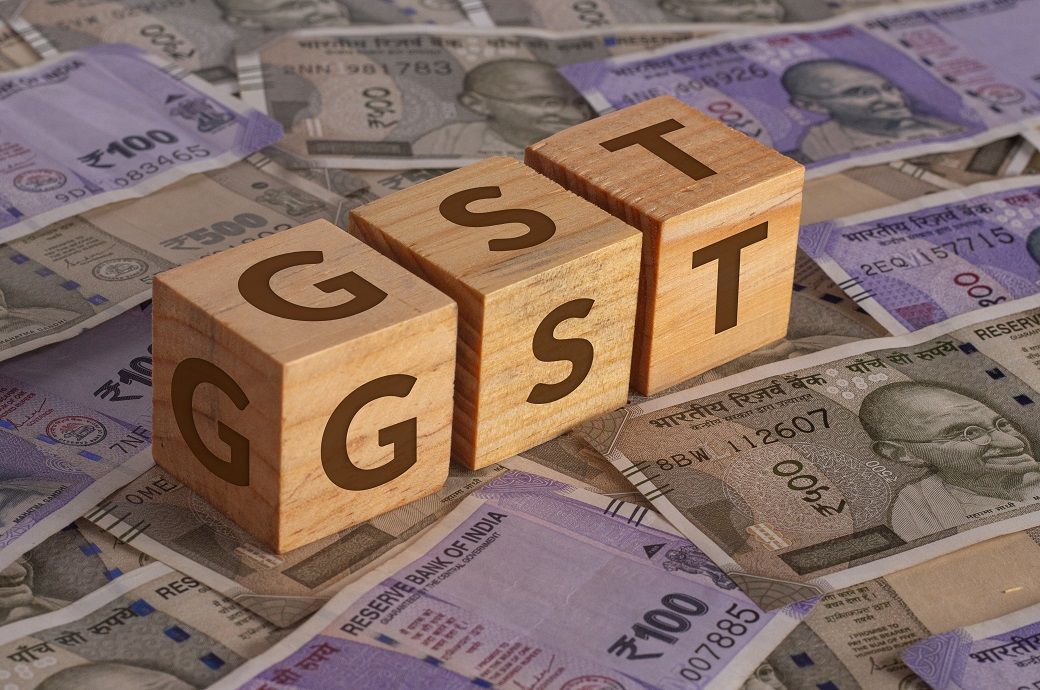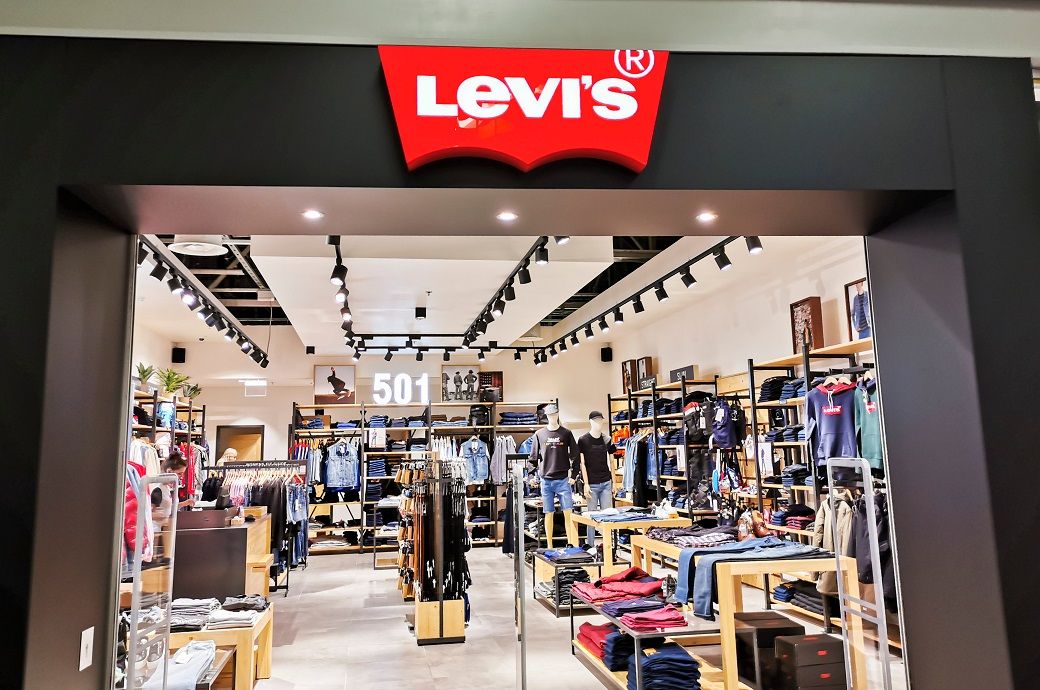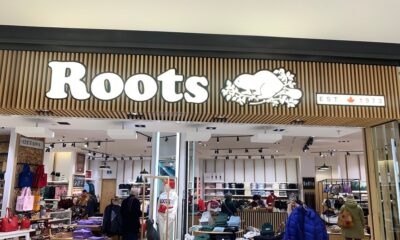Fashion
Stakeholders in T&A, retail weigh in on India’s GST 2.0 reform

The 56th meeting of the GST Council held recently has culminated in a landmark restructuring of India’s indirect tax regime, with far-reaching implications across key sectors.
The earlier five-tier GST structure—comprising 0 per cent, 5 per cent, 12 per cent, 18 per cent, and 28 per cent slabs—has been replaced by a more streamlined framework featuring just two principal rates of 5 per cent and 18 per cent, supplemented by a new “sin and luxury” rate of 40 per cent for a narrow band of goods.
The revised GST rates are scheduled to take effect from September 22.
For the apparel and textile sector, the council has fixed a uniform 5 per cent GST rate on readymade garments and made ups, excluding items under HS codes 63053200, 63053300, and 6309.
In a significant rationalisation, the GST on manmade fibres has been slashed from 18 per cent to 5 per cent, while yarns have been brought down from 12 per cent to 5 per cent. This alignment effectively corrects the long-standing inverted duty structure (IDS) across the MMF value chain—fibre, yarn, and fabric—removing a key distortion that had undermined manufacturing competitiveness and locked up working capital.
Given that a substantial portion of MMF production takes place in the MSME segment, the rate cuts are expected to alleviate cost burdens, enhance liquidity, and improve cash flow efficiency.
More importantly, the move bolsters the global price competitiveness of Indian MMF-based garments, reinforcing the country’s strategic objective of becoming a dominant hub for synthetic textiles and MMF-based apparel.
The timing of the GST overhaul is particularly crucial, offering timely relief to an industry reeling from the impact of US President Donald Trump’s steep 50 per cent tariff on Indian goods.
While the Government has maintained that the GST reform has been in the works for over a year and is not a reactionary policy move to US tariffs, the revised GST structure is nonetheless seen as a much-needed support mechanism for export-oriented industries navigating severe external shocks.
Industry stakeholders largely welcomed the reform, viewing it as a long-overdue rationalisation of what many felt was an irrational tax structure.
S.K. Sundararaman, Chairman of the Southern India Mills Association (SIMA), reportedly noted that the prior tax regime—where MMF inputs were taxed higher than outputs—effectively made affordable clothing more expensive for end consumers. The rectification is expected not only to enhance affordability but also to reduce import dependency by promoting domestic value addition.
Rakesh Mehra, Chairman of the Confederation of Indian Textile Industry, echoed similar sentiments, emphasising that the alignment of tax rates across the MMF value chain is a critical step toward resolving longstanding working capital constraints faced by thousands of spinners and weavers.
Mehra reportedly also pointed out that over 70 per cent to 80 per cent of the textile and apparel ecosystem is comprised of MSMEs, many of which operate on tight margins and limited cash reserves. For them, any measure that eases input cost burdens and streamlines refunds has a direct bearing on operational viability and market competitiveness.
Some concerns have, however, emerged centring on the move to impose an 18 per cent GST on garments priced above ₹2,500.
The Clothing Manufacturers Association of India (CMAI), while fully endorsing the revised GST rate structure and commending the Government for accepting two key industry demands—the elimination of the inverted duty structure by applying a uniform 5 per cent GST across the entire value chain from fibre onward, and the adoption of a fibre-neutral approach by aligning MMF and cotton fibre chains—has urged the GST Council to address one anomaly: the imposition of 18 per cent GST on garments priced above ₹2,500.
CMAI stressed that this higher tax rate undermines affordability and creates an unnecessary burden on consumers, despite the broader positive intent of the reform.
The Retailers Association of India (RAI), while supportive of the move towards a simpler dual-rate GST system, also flagged the structural shortcomings of price-based tax slabs. The RAI has recommended the adoption of a uniform GST rate across product categories, cautioning that the 18 per cent GST on apparel items priced above ₹2,500 could distort consumer behaviour and suppress demand in key segments of the fashion retail market.
Some industry insiders also believe that the differential tax treatment based on price bands may inadvertently fuel the growth of the grey market, leading to an uptick in counterfeit and substandard goods as consumers seek cheaper alternatives.
Others have highlighted that apparel brands and retailers typically operate on razor-thin margins and may have no option but to pass on the higher tax burden to the consumers.
In such a scenario, the anticipated growth in domestic fashion retail could be impacted.
Notwithstanding the apprehensions, the on-ground impact of the new GST structure will become more apparent in the quarters following its implementation, most stakeholders felt, while underlining that with any policy overhaul of this magnitude, one cannot completely rule out transitional friction.
However, the broader consensus within the industry suggests that the benefits, particularly in terms of ease of doing business and improved cost efficiencies, might very well outweigh the short-term disruptions, if any.
The 56th GST Council meeting introduced a simplified regime, collapsing the earlier five-rate system into two primary slabs.
A uniform 5 per cent GST has been fixed for most garments and manmade fibres/yarns.
Some trade bodies have raised concerns over the 18 per cent GST on garments above ₹2,500; the majority, however, feel the reform will boost competitiveness and sectoral growth.
Fibre2Fashion News Desk (DR)
Fashion
US brand Levi Strauss appoints H&R Block CEO Jeffrey Jones to board

“Mr. Jones brings extensive experience in consumer insights, brand building and organizational transformation and has a proven record of creating significant stakeholder value,” said Bob Eckert, chair of the board of Levi Strauss & Co. “He has repeatedly strengthened brands and organizations across industries, and his leadership will play a critical role as we evolve LS&Co. into a best-in-class, DTC-first retailer.”
Levi Strauss & Co has appointed H&R Block president and CEO Jeffrey J Jones II to its board, effective January 21, 2026.
He will serve on the nominating, governance and corporate citizenship committee and the compensation and human capital committee.
Jones brings over 30 years of experience in consumer, retail and technology leadership, strengthening LS&Co’s DTC-focused strategy.
Mr. Jones has served as President, Chief Executive Officer and Director of H&R Block, Inc. since 2017 and will retire from the company on December 31, 2025. He previously served as President of Ride Sharing at Uber Technologies Inc., where he led operations, customer support, strategy and planning, product operations and marketing. Mr. Jones also served as Executive Vice President and Chief Marketing Officer at Target Corporation, overseeing brand, digital and guest experience strategy, corporate communications, investor relations and brand management of all owned brands and Target’s limited-time offering collaborations. Earlier in his career, Mr. Jones was partner and President of McKinney, an advertising agency, where he led major client engagements and organizational growth.
“Levi Strauss & Co. is an iconic company with a bold vision for the future, and I’m honored to join the board at such a pivotal moment,” said Jeffrey J. Jones II. “The company has been on a strong trajectory, deepening its connection with consumers and driving long-term, sustainable growth. I look forward to supporting the entire leadership team as they write the next chapter for this nearly 175-year-old company.”
Mr. Jones is a member of the Council for Inclusive Capitalism, the Fast Company Impact Council and the Kansas City Economic Club. He holds a Bachelor of Arts degree in Communications from the University of Dayton.
Note: The headline, insights, and image of this press release may have been refined by the Fibre2Fashion staff; the rest of the content remains unchanged.
Fibre2Fashion News Desk (RM)
Fashion
Columbia launches star-studded US Curling team uniforms for 2026

USA athletes and coaches across the Men’s, Women’s, Mixed Doubles, and Wheelchair National Teams will compete in uniforms that tell a story of our country’s heritage and stunning landscapes. The dark jersey features eight cascading stars in red, white and blue – symbolizing the curling stones used in competition. And in a powerful tribute to history, every jersey is adorned with at least 250 stars, celebrating the upcoming 250th anniversary of America’s independence.
Columbia Sportswear returns as official uniform sponsor for the US Curling National Team at the 2026 Winter Olympic Games, blending technical performance with national pride.
New competition and village wear feature heritage-inspired designs, Omni-Heat Infinity insulation, and 250 stars marking America’s upcoming 250th independence anniversary, with replica jerseys available for fans.
In addition to the competition jerseys, pants and hats, Columbia is providing athletes with village wear, including USA-branded parkas. The parkas are insulated with Columbia’s award-winning Omni-Heat Infinity, the brand’s warmest technology, reimagined in a patriotic gold star pattern to honor the historic games.
“Outfitting the United States Curling Team for the Olympic stage is an incredible honor and our teams have worked closely with USA Curling over the past several years to help propel them to the podium in Italy,” said Joe Boyle, President of Columbia Sportswear. “The uniforms are a testament to our commitment to these ambassadors – and we’re proud to support these athletes as they compete at the highest level.”
“Preparing for the Winter Games demands more than just talent; it requires gear that performs under pressure,” said Dean Gemmell, CEO of USA Curling. “Columbia’s technical expertise and athlete-first approach make them trusted partners as we head to Italy with confidence.”
Note: The headline, insights, and image of this press release may have been refined by the Fibre2Fashion staff; the rest of the content remains unchanged.
Fibre2Fashion News Desk (RM)
Fashion
China’s HSG buys controlling stake in Golden Goose

Published
December 19, 2025
Chinese Global investment firm HSG has acquired a controlling stake in Italian sneaker label Golden Goose, in one of the biggest Chinese investments in a European luxury brand.
Temasek, a global investment company, and a fund managed by its wholly-owned asset manager, True Light Capital, will acquire a minority stake. US investment fund Permira will remain committed as a strategic minority shareholder, continuing its successful partnership with Golden Goose, according to a press release from the Venice-based sneaker brand.
The deal ends months of speculation that Golden Goose was about to be sold to a Chinese investor.
Financial terms of the transaction were not disclosed. The transaction is subject to customary closing conditions and regulatory approvals and is currently expected to close within the summer of 2026. Golden Goose S.p.A. expects its €480.0 million Senior Secured Floating Rate Notes due 2031 to be redeemed in full.
Golden Goose has been the fastest growing Italian fashion label in the past half-decade, stunning observers with its exceptional performance. Since 2020, the group has delivered consistent, strong, and profitable growth, with revenues increasing from €266 million in FY 2020 to €655 million in FY 2024. During this period, the group has accelerated its direct-to-consumer (DTC) channels, launched its Forward Store concept, diversified its product assortment, and invested significantly in ‘Co-Creation’ experiences, deepening connections with its customers worldwide.

This investment comes amid a period of strong financial performance for Golden Goose. In the nine months ending September 2025, the group reported double-digit growth across regions. Revenues rose 13% year-on- year, driven by 21% growth in its DTC channel and an expanded store network, which reached 227 directly operated stores, up from 97 in 2019.
The investment is underpinned by a strong strategic and cultural fit with Golden Goose’s growth ambitions. Drawing on the new investors’ combined experience and track records investing in international luxury and consumer technology brands, such as Moncler and Ermenegildo Zegna group by Temasek, and ByteDance, Pop Mart, RedNote, and Marshall by HSG, they will support Golden Goose’s international ambitions as a leading next-generation luxury brand, while preserving and continuing to invest in Golden Goose’s Made in Italy roots.
Silvio Campara, Golden Goose’s hard charging CEO, will continue to lead the group as chief executive officer, alongside the existing leadership team. Marco Bizzarri, currently a non- executive director on the Golden Goose board, will become non-executive chairman. He brings significant industry expertise, shaped by his leadership of globally renowned luxury brands including Gucci, Bottega Veneta, and Kering, and will play an important role in accelerating Golden Goose’s next phase of global expansion.

“We are delighted to welcome HSG and Temasek as strategic partners to Golden Goose as we step up our global ambitions as a leading international luxury brand. Their investment is yet another vote of confidence in the success of our model at the intersection of luxury, lifestyle, and sportswear, beloved by a growing, global community of dreamers. With their experience of scaling international leaders across luxury and the broader business spectrum, HSG and Temasek will help us unlock the vast opportunity ahead for Golden Goose. We are grateful to Permira for being integral partners to our successful journey so far and are delighted they will remain valued partners alongside HSG and Temasek,” said Campara.
“Golden Goose stands for love, empathy, authenticity and a powerful sense of community in today’s luxury landscape,” added Jiajia Zou, Partner at HSG. “We feel deeply privileged to partner with Temasek and Permira, together with Silvio and his talented team to support the brand as it enters its next exciting chapter of growth- especially internationally- while preserving and celebrating what makes Golden Goose so uniquely Italian. We look forward to contributing our global experience, resources, and deep respect for the brand’s heritage, with the shared ambition of bringing the unique joy and spirit of Golden Goose to consumers around the world, for generations to come.”
In addition, Francesco Pascalizi and Tara Alhadeff, partners at Permira, commented: “Golden Goose has led the way in defining what it is to be a next-gen luxury brand for two decades now. They have built a unique community of GG-lovers around the world whilst also building a robust and high performing business. Against a challenging backdrop for the luxury industry in 2024 and 2025, Silvio and his talented team have continued to deliver strong performance and healthy growth, proving that Golden Goose is a brand that can stand the test of time.”
Copyright © 2025 FashionNetwork.com All rights reserved.
-

 Business6 days ago
Business6 days agoHitting The ‘High Notes’ In Ties: Nepal Set To Lift Ban On Indian Bills Above ₹100
-

 Tech6 days ago
Tech6 days agoFor the First Time, AI Analyzes Language as Well as a Human Expert
-

 Business5 days ago
Business5 days agoKSE-100 index gains 876 points amid cut in policy rate | The Express Tribune
-

 Sports5 days ago
Sports5 days agoJets defensive lineman rips NFL officials after ejection vs Jaguars
-

 Business5 days ago
Business5 days agoStudying Abroad Is Costly, But Not Impossible: Experts On Smarter Financial Planning
-

 Business1 week ago
Business1 week agoIPO Explained: Meaning, Process, Benefits, Risks
-

 Tech1 week ago
Tech1 week agoCursor Launches an AI Coding Tool For Designers
-

 Sports6 days ago
Sports6 days agoSource: U-M launches athletic department query


















